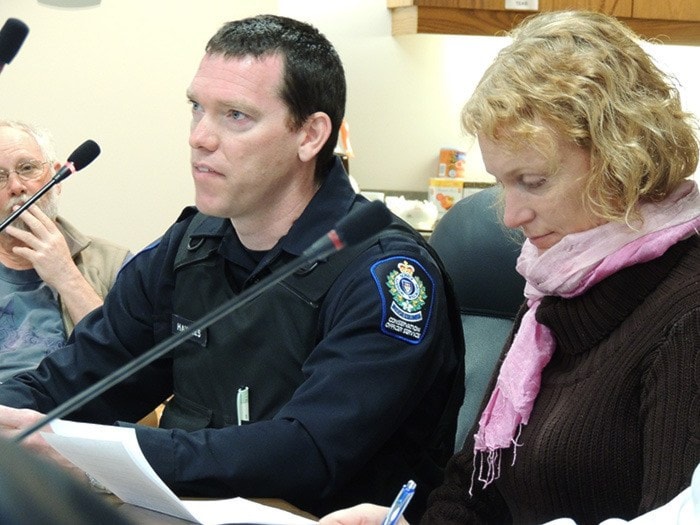Rural West Kootenay residents may have another option to store their garbage in bear proof containers. Conservation officer Jason Hawkes and Gillian Sanders presented the idea to the Regional District of Central Kootenay board on Thursday as part of the West Kootenay human bear conflict working group.
Hawkes said 35 per cent of the wildlife problem in the RDCK is related to garbage. Animals will associate a location with a food source (usually garbage) and will continue to return seeking food.
“Killing bears that have been conditioned to eat garbage is a well-recognized problem,” said Sanders. “We’ve known for more than 40 years not to feed bears. It’s so last century.”

The pair requested $7,500 of the $25,000 they are raising in the region. The $7,500 would purchase 25 bins at $250 apiece with aims to allocate five bins each in five areas. Their focus is to provide the containers in rural areas for residents who otherwise have no secure place to store garbage between the time it leaves their house and is taken to a transfer station.
Sanders said a 50/50 cost share program can also be arranged for residents. There are two models that require opposable thumbs to open, preventing bears from getting into them. They come in 32, 64, and 94-gallon sizes (121, 242, and 356 litres).
Sanders and Hawkes indicated they could be in place by May if the regional district supports the program.
Rural Kaslo director Aimee Watson said with lots of safety issues and harvest sharing in her area, she would love to endorse it.
Rural Nelson director Ramona Faust wanted help from the delegation to determine target areas — places that have high garbage output.
“In my area, people take matters into their own hands,” said Faust, alluding to firearms.
Hawkes and Sanders fielded several questions regarding the particulars of the bins and broader wildlife attractant issues like composting.
In response to East Shore director Garry Jackman's question of how to anchor the bins, Hawkes said the handles can be chained to trees or solid fixtures.
Hawkes added: “Even if an animal manages to move the container, as long as the bear doesn’t get rewarded [with food] that’s good, it’s separating the reward of the garbage.”
Silverton director Leah Main requested assistance with guidelines and advice for managing composting programs “so it doesn’t become an attractant.”
Sanders said loaning 25 bins so residents will have a place to put their refuse is a small start but with more funds, the program can grow.
Hawkes said on average 900 black bears and 50 grizzlies are destroyed every year in BC.
(CORRECTION: An earlier version of this story misspelled Gillian Sanders' name.)
